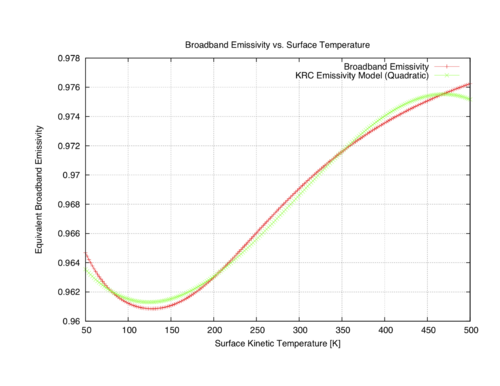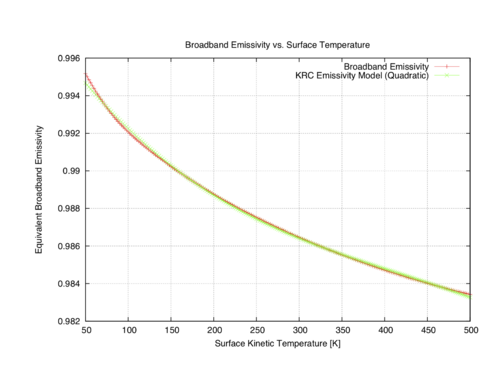link wishes
k(T) all layers
k(T) = A+B*T+C*T^2+D*T^3
NOTE: Not just 2 domains/layers, but All
Cp(T) all layers
Cp(T) = A+B*T+C*T^2+D*T^3
NOTE: Not just 2 domains/layers, but All
Surface/Atmosphere Sensible heat exchange Q
Q = h × (Tsurf - Tatm)
NOTE: Tsurf is the kinetic surface Temperature; Tatm is the air temperature near the surface; Q is an additional heat flux term at the surface; h is a convective heat transfert coefficient.
Temperature-dependent Emissivity ε(T)
ε(T) = A + BxT + CxT^2 + DxT^3
NOTE: Keihm 1984 + Birkebak 1974
An analysis of the impact of ε(T) is performed using a typical TES basalt (File:bandfield epf derived basalt spectrum.txt) and a typical TES dust (File:bandfield epf derived dust spectrum.txt).
Equivalent broadband emissivities as a function of temperature are shown below.
For a wide range of surface temperatures (50-500K), the broadband apparent emissivity only changes by small factors (1-2% at most).
Analysis and plot generated using this algorithm: File:KRC Emissivity T.dv
Conclusion: Excellent fits to these behaviors can be obtained with polynomial functions. This is a small overall effect.



